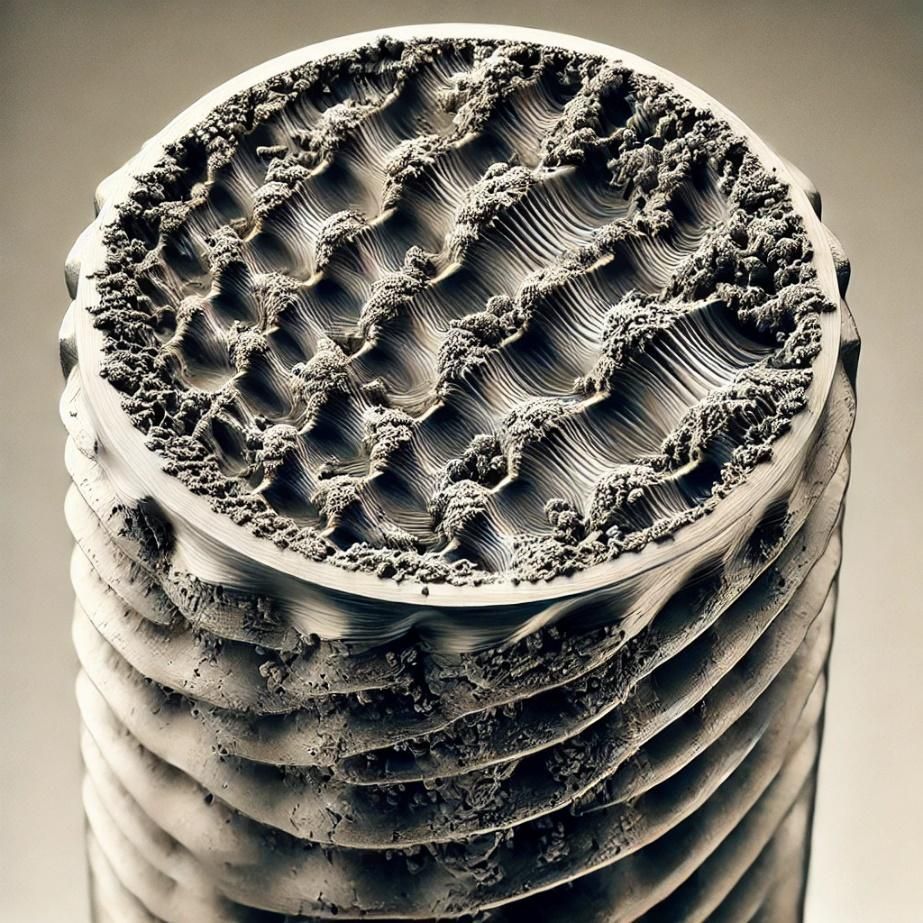MECHANICAL AND CHEMICAL SYSTEMS TO PREVENT LOOSENING OF THREADED JOINTS
In the field of mechanical engineering, preventing the loosening of threaded joints is crucial to ensuring the safety and efficiency of structures. The ISO (International Organization for Standardization) standards provide fundamental guidelines for the design and maintenance of these joints. Two main approaches are used to prevent loosening: mechanical and chemical systems.
Mechanical Systems
Mechanical systems use physical devices to maintain tension in threaded joints, preventing them from loosening. These include:
- Lock Washers – Increase friction between the nut and the mating surface.
- Locknuts – Secondary nuts used to secure the primary nut in place.
- Threaded Inserts – Metal sleeves that increase assembly strength.
Lock Washers
Lock washers use their shape to
increase friction.
Toothed washers, for example, interlock with the mating surfaces, while
spring washers exert a constant force that maintains tension.
| WASHER TYPE | MATERIAL | TYPICAL APPLICATION | ADVANTAGES |
|---|---|---|---|
| Serrated | Stainless Steel | Automotive Industry | High Friction |
| Spring | Carbon Steel | Industrial Machinery | Constant Tension |
| Flat | Stainless Steel | General | Load Distribution |
Locknuts
Locknuts are tightened against the
primary nuts to hold them in place. This method is particularly useful in
high-vibration applications.
| ADVANTAGES | DISADVANTAGES |
|---|---|
| Easy to install | Increased assembly weight |
| Cost-effective | May require more space |
Chemical Systems
Chemical systems include adhesives and sealants applied to threads to increase friction and prevent loosening. These chemicals harden, creating a strong bond between threaded components.
- Anaerobic Adhesives – Used for permanent or semi-permanent joints.
- Thread Sealants – Prevent fluid and gas leaks, enhancing joint reliability.
Anaerobic Adhesives
Anaerobic adhesives are widely used due to their ability to
harden in the absence of oxygen, ensuring
secure fastening of threaded joints.
| ADHESIVE TYPE | TENSILE STRENGTH (MPA) | CURING TIME | APPLICATIONS |
|---|---|---|---|
| Low | 10 | 20 min | Temporary assemblies |
| Medium | 20 | 15 min | Engines and transmissions |
| High | 30 | 10 min | Permanent structures |
Thread Sealants
Thread sealants not only prevent loosening but also offer protection against corrosion and contamination.
| SEALANT TYPE | TEMPERATURE RESISTANCE | TYPICAL APPLICATIONS |
|---|---|---|
| Silicone | -60°C to 200°C | Liquid piping |
| Polyurethane | -30°C to 120°C | Plumbing systems |
| Acrylic | -40°C to 150°C | Exhaust systems |
Conclusion
The choice between mechanical and chemical systems to prevent loosening in threaded joints depends on various factors such as specific applications, cost, and operating conditions. Mechanical systems are generally preferred for their reliability in high-vibration conditions and ease of installation, while chemical systems provide versatile solutions, enhancing corrosion resistance and sealing joints against fluid leaks.
Benefits of ISO-Compliant Products for Preventing Loosening in Threaded Joints
- Reliability – Ensure continuous and safe machine operation, reducing the risk of failure.
- Lower Maintenance Costs – Decrease the frequency and cost of maintenance interventions.
- Versatility – Suitable for a wide range of industrial applications.
- Safety – Improve
operational safety, reducing the risk of accidents caused by
mechanical failures.

Sistemi meccanici e chimici per prevenire l'allentamento di giunti realizzati con elementi filettati









